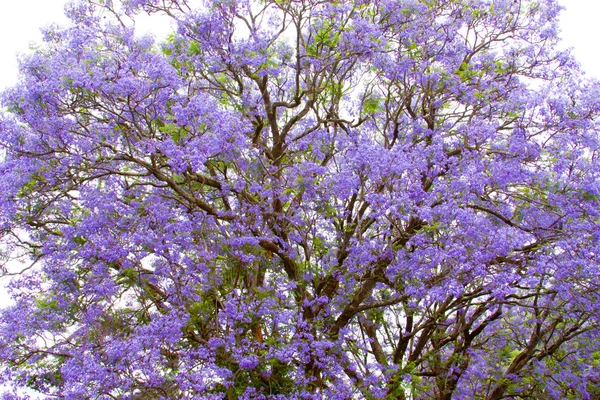

The jacaranda tree is closely related to the popular Trumpet tree (Catalpa bignonioides). It's hard to miss the jacaranda trees this. The flowers are produced in conspicuous large panicles, each flower with a five-lobed blue to purple-blue corolla a few species have white flowers. San Diego has about 12,000 of the flowering jacaranda street trees planted around the city, and it seems like they are all going off right now. Even in some places too cold for jacarandas to flower, these trees are grown for their. The leaves are bipinnate in most species, pinnate or simple in a few species. Growing a jacaranda tree can be done in a variety of ways, such as grafting, softwood cutting, from seed, and propagation. When the French botanist Jussein gave the Jacaranda species the botanical name "mimosifolia" in 1818, he translated a local name for the tree with leaves "like mimosa". Description The species are shrubs to large trees ranging in size from 20 to 30 m (66 to 98 ft) tall. The fact that it is still cultivated in climatically unfavorable areas is due to the attractive, filigree leaves.

The woody plants are fast-growing, and their branches are often prone to breaking. In fact, it’s so hardy that southeastern Queensland, Australia considers the shrub an invasive species. Therefore, it’s hardy growing in USDA zones 9 through 11. However, Jacaranda mimosifolia often does not flower in pots. It’s a popular and hardy tree cultivated in subtropical and tropical climates. Many amateur flower growers are experimenting with growing this extraordinary plant, but so far their efforts have been unsuccessful. Jacaranda (violet tree) in Russia, unfortunately, does not grow in natural conditions. Wherever the climate is suitable, it has become a popular avenue and park tree that looks impressive when it is in bloom. They are very reminiscent of the leaves of the fern. You can find it on the Mediterranean coast in Spain or on the Balearic Islands. There is evidence that the deciduous tree with the spectacular bell blossoms was introduced to Europe in the 19th century. Plant collectors must have been enormously impressed by the splendor. Growing between 8 and 15 metres tall, and 4.5 to 8 metres in width, the jacaranda tree is a large deciduous tree with striking purple spring flowers. From there the jacaranda tree reached all over the world. The species is native to the plateaus in northwest Argentina and adjacent areas in Bolivia.


 0 kommentar(er)
0 kommentar(er)
